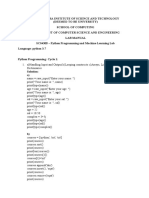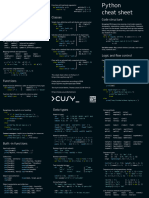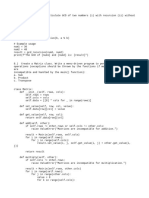0% found this document useful (0 votes)
13 views11 pagesNM Program
The document contains various code snippets demonstrating different programming concepts. It includes string validation, number operations, duplicate number finding, array intersections, unique character identification, vowel reversing, twin prime finding, electricity bill calculation, discounted price calculation, password generation, and a student attendance record system. Each section provides example usage to illustrate the functionality of the implemented classes and methods.
Uploaded by
subathras405Copyright
© © All Rights Reserved
We take content rights seriously. If you suspect this is your content, claim it here.
Available Formats
Download as DOCX, PDF, TXT or read online on Scribd
0% found this document useful (0 votes)
13 views11 pagesNM Program
The document contains various code snippets demonstrating different programming concepts. It includes string validation, number operations, duplicate number finding, array intersections, unique character identification, vowel reversing, twin prime finding, electricity bill calculation, discounted price calculation, password generation, and a student attendance record system. Each section provides example usage to illustrate the functionality of the implemented classes and methods.
Uploaded by
subathras405Copyright
© © All Rights Reserved
We take content rights seriously. If you suspect this is your content, claim it here.
Available Formats
Download as DOCX, PDF, TXT or read online on Scribd
/ 11






















































































